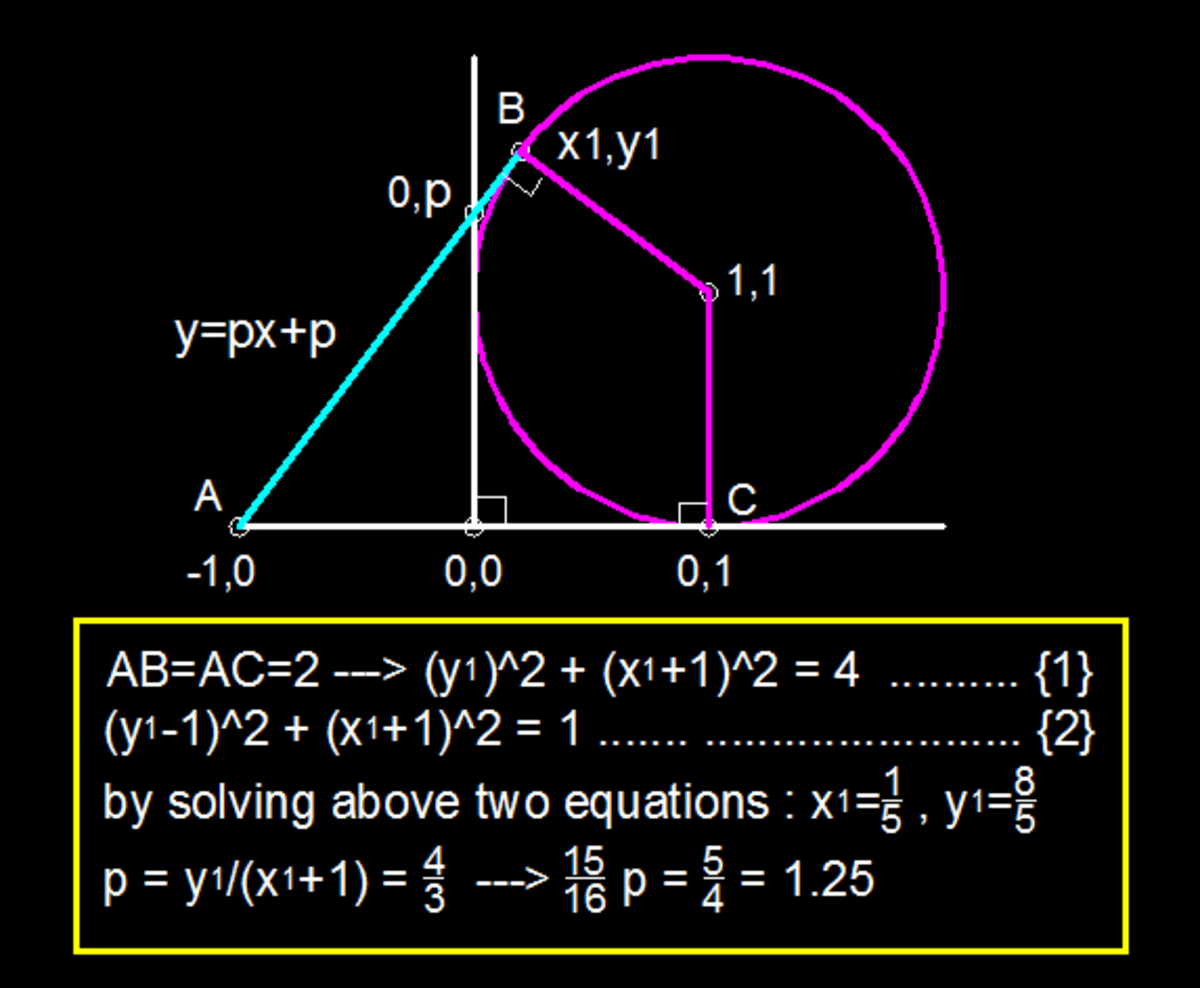Tangents
On the Cartesian Plane, a circle centered at is tangent to the axes. A line whose -intercept and slope have the same value is drawn and is tangent to the circle. What is the value of ?
The answer is 1.25.
This section requires Javascript.
You are seeing this because something didn't load right. We suggest you, (a) try
refreshing the page, (b) enabling javascript if it is disabled on your browser and,
finally, (c)
loading the
non-javascript version of this page
. We're sorry about the hassle.

Since the circle is tangent to the axes, it has radius 1 an equation ( x − 1 ) 2 + ( y − 1 ) 2 = 1 . Let P = k 1 . The line has equation y = k x + 1 . This gives x − 1 = k y − 2 . We have ( x − 1 ) 2 + ( y − 1 ) 2 = ( k y − 2 ) 2 + ( y − 1 ) 2 = y 2 ( k 2 + 1 ) − y ( 4 k + 2 ) + 5 = 1 .
We know that the polynomial y 2 ( k 2 + 1 ) − y ( 4 k + 2 ) + 4 = 0 has real roots, therefore its discriminant is greater than or equal to zero. Since the line is tangent to the circle, we look for the greatest possible value of slope P = k 1 ( − ( 4 k + 2 ) ) 2 − 4 ( k 2 + 1 ) ( 4 ) ≥ 0 1 6 k − 1 2 ≥ 0 3 4 ≥ k 1 = P
Hence, our answer is 1 6 1 5 P = 1 . 2 5 .
Interesting Fact: This problem can share a similar solution to this one.